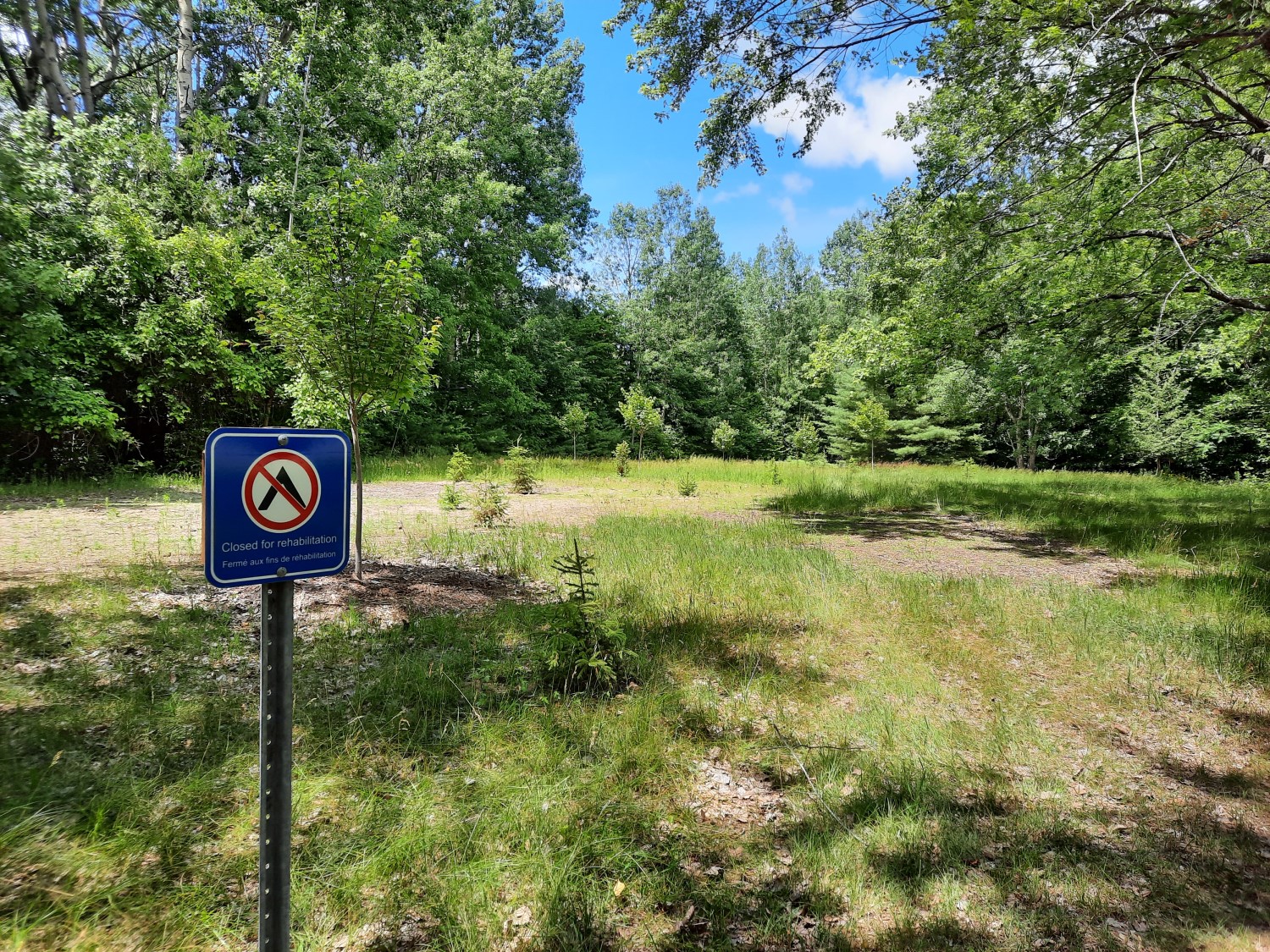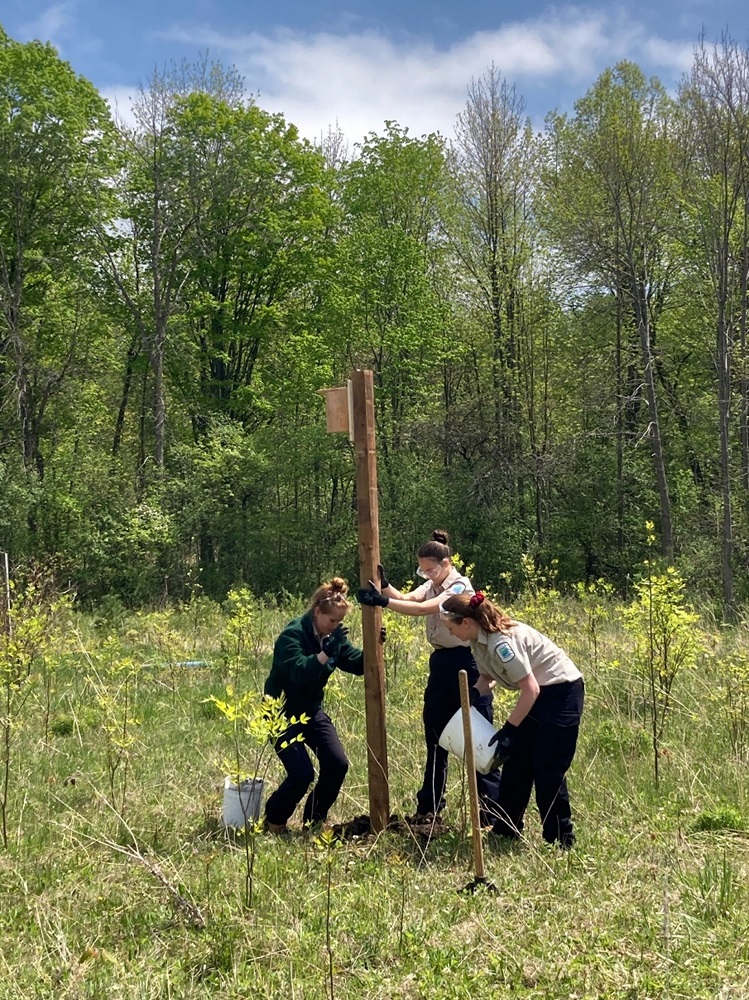
In today’s post, Protected Areas Intern Katelyn Vardy highlights a few of the projects that staff have completed to improve and maintain the ecological integrity in southeastern parks.
When you’re standing in a favourite nature spot or within a park, it’s easy to embrace the beauty and calmness that surrounds you.
While campers and day trippers enjoy all that parks have to offer, behind the scenes are teams of staff working incredibly hard. Their work helps to protect these areas so that they can be enjoyed for years to come.
Here’s a look at some of the projects that we have completed to support the ecological integrity of southeastern parks.
~
Slowing the spread of invasive species
Invasive species are difficult to manage as they’re capable of outcompeting and overthrowing native vegetation.
The removal of invasive woody shrubs like European Buckthorn, Black Locust, and Honeysuckles restores habitats by increasing light to the understory of natural environments and creating space for native plants to flourish.

Park staff work diligently to manage invasive species populations by targeting patches that can be managed, species that have the highest impact, or those that threaten an important part of the ecosystem.
Staff either physically remove plants and dispose of them or use tactics like attaching bags to stumps of European Buckthorn after they’re cut to prevent regrowth.
There are many ways you can support these efforts to slow the spread of invasive species! Try using boot brushes at trailheads and cleaning off plant matter from clothes and equipment to prevent seed dispersal into or out of species’ existing range.

The Early Detection and Distribution Mapping System (EDDMapS) and iNaturalist are useful apps for visitors and communities to identify, report, and aid in the monitoring of alien species.
Together, we can protect ecosystems within Ontario Parks.
~
Planting trees
Tree planting of native species is a great way to help restore and improve our parks ecological integrity.
They add to the local biodiversity, naturalize spaces, and can be used as a restoration tool where an invader has wreaked havoc, such as in areas that have been heavily impacted by the invasive Emerald Ash Borer.

These trees also provide new habitat for wildlife, shade and cover for visitors, and add to the beauty of fall colors in the park.
Park biologists thoughtfully choose a variety of native species to plant in our parks based on ecosystem needs.
Species like Butternut and Pitch Pine were chosen with hopes to re-establish populations that have been impacted by disease and/or habitat loss.
Red Maple, Norway Spruce, Tamarack, White Spruce, Blue Beech, Black Cherry, Hackberry, and Black Maple were chosen to help forest resilience, diversity and overall health of the ecosystem for the future.

Over 150 trees were planted within our parks by our dedicated staff and 350 seedlings are being grown and stored in park tree nurseries for three seasons until they can join the landscape.
We encourage you to naturalize your own yard with native plants in whichever way you choose, from tree planting, to diversify your neighbourhood, to a welcoming pollinator garden with a variety of flowers.
~
Building nesting boxes for wildlife occupancy
Wildlife have found ways to use natural and human-made structures like houses, sheds, decks, or even log piles to their advantage for a cozy place to stay, and these spaces within Ontario Parks is no exception!

Several parks have created new artificial nesting opportunities for birds and alternative roosting sites for bats.
Bird species that eat flying insects are in decline in part due to a lack of food and habitat.
Tree and Barn Swallows enjoy parks that provide good feeding opportunities and healthy ecosystems to support all those bugs.

This past year, we’ve provided nest boxes or nesting structures in hopes our feathered friends will return to nest year after year and raise their young before our eyes.
Most bat species in Ontario are at risk, often due to habitat loss. Staff place bat houses in areas where bats already spend time.
Ideally, these bats will feast on the local mosquito population, which is a big plus for campers!
If you stumble upon one of these alternative wildlife homes, you may even get a glimpse of the current tenants!
~
How you can give back to Ontario’s ecosystems
Ecosystems have high ecological integrity when they have their mixture of living and non-living parts and the interactions between these parts are not disturbed (by human activity).
At each provincial park we do our best to keep ecosystems intact to support ecological integrity.
By doing seemingly small acts of stewardship, we hope to maintain the park’s natural spaces for everyone to enjoy.

We encourage visitors to discover what each natural space and park has to offer.
If you’re looking at ways to give back, there are many opportunities to accomplish habitat restoration, revitalization, and management.
It’s cost-effective and rewarding to plant a small sapling in your yard and watch it grow, or hang a bird house, box, or nest for birds to raise their young.
~


